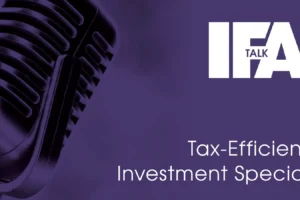Helicopter Ben Bernanke’s Contradictory Statements Hold No Terrors for Old Mutual’s Ian Heslop
Will he, won’t he? And if not now, when? The last month’s policy swerves on QE tapering from Fed chairman Ben Bernanke have been sending the US investment markets in every direction but forward, it seems. And as we headed into October, the markets were still feeling distinctly rattled by Helicopter Ben’s new-found love for contradictory hints – one week seeming to suggest that the Fed’s $85 billion monthly splurge of new money issues was about to shrink, and the next week declaring that said no, we’ve got no plans to change our course just yet.
And so it came about that the S&P 500 shot up by 5% in the first two weeks of September, upon vague hints of the taper, and then retrenched, and then advanced, then, and… oh, you get the idea. And all the while, Treasury bond yields advanced as the market tried to adjust to whatever it was that it thought Mr Bernanke was saying at the time. Or not, as the case may be. It was all very disconcerting.
A Sense of Certainty
But once you get beyond the day to day uncertainties of this distinctly wobbly international patch, the thing that seems to come through is a sense of purpose that really isn’t so obvious in Europe or the emerging markets. Somehow, it seems that the disruptive forces from Washington are being amply contained by a stock market that doesn’t have too many fundamental worries about the future.
And that, as Old Mutual’s Ian Heslop told IFA Magazine, is because even the bad news from America really isn’t as bad as it might seem. A thought which is especially comforting, coming as it does from somebody who, as head of quantitative strategies at OMGI, has presided over a 30% growth in the Old Mutual North American Equity fund in the year to September – and an even more impressive 79.5% over three years. (Source: Morningstar.)
Bernanke’s recent about-turns on the taper? Nothing serious, Heslop told us. It was just that, while weighing up the prospects for the start of tapering, the Treasury became aware that some things in the economy weren’t ready for that stage, and that a temporary backing-off became appropriate.
Sharply rising interest rates on the mortgage front, which have risen by 1% in the last quarter? Simply a logical response to a rise in the 30 year bond, says Heslop. And, we night add, probably not untimely anyway, given that house prices rose by 12.4% in during the year to June, as measured by the Case-Shiller composite house price index. Not that that gives us any real concern. “I don’t think there’s any reasonable argument for a bubble forming in the US,” he says. “Price levels are still well below their long-term trend.”
There’s a secondary issue here, though, because the rate rise has “significantly” reduced the level of refinancing – which in turn has had an impact on the amount of money in people’s pockets, he says. But actually rising house prices are generally good for the retail trade, because of the way they spread feel-good that can be translated into more borrowing and spending power. Consumer confidence is now at its post-2008 highs, he says.
Job Mobility – The Dynamic Difference
Disappointing job creation rates in August? Well, yes, the non-farm numbers did come in below expectations – at 169,000 new jobs instead of the hoped-for 180,000 – and although the jobless rate fell to the lowest rate since 2009, that was probably because large numbers of people are now abandoning the search for work.
Was that a sign of hopelessness? Not at all, says Heslop, it’s partly a structural thing. On the one hand, the baby boomers are starting to retire. And on the other, he says, we do need to remember that America’s employment scene is changing dynamically, as new trades and professions require new skills and the older skills become redundant.
For instance, he says, the advent of shale gas is only the latest of the recent trends to shake up the jobs market – not just because it imposes reskilling requirements but also because people have to move to new areas to exploit new job opportunities. “At times like these, there’s necessarily a lag between the unemployment rate and the participation rate. In effect, this dynamic nature puts a cap on how low the unemployment rate can go.”
On the whole, he agrees that the hesitant upturn in the jobs market was one of the valid reasons for Bernanke’s pull-back from the taper.
Profits Growth Slows
What about corporate profits, then? The good news is that this year’s profits growth on the S&P 500 is heading for 6.3%. The bad news is that it was 31% in 2010, and that only three months ago the estimates for this year were closer to 7.5%. And that the standard measure of forward price/earnings on the S&P is now at 14.94, compared with 12.7 at the end of last year. Doesn’t that suggest that things are getting a little toppy? And that the leverage implied by all this forward confidence is getting a bit stretched?
Hardly, says Heslop. For one thing, the average historical forward p/e on the S&P is about 17, suggesting that we’re still under trend. And yes, it’s likely that US corporations have achieved the best of their cost efficiencies, and that from here on any increase in profits is going to have to come from increased revenues instead.
“They are now sized correctly,” he says, “and with consumer confidence rising there’s no reason why revenues shouldn’t improve over the next twelve months.”
Another point that we tend to overlook on this side of the Pond is that US manufacturers’ input costs have been falling sharply as shale gas has cut the price of energy at the same time as commodity prices have been suppressed. And then there’s the onshoring issue, where jobs that used to be done in Asia have been returning. That factor alone may have added as many as 500,000 jobs to the US payroll over the last three to four years.
The Relative Advantage
Besides, he asks, where are you going to put your money if not into equities? “Yes, we know that this tapering issue is out there, but economic policy will soon normalise the situation….. And when it comes, where will the impact of that normalisation be felt?”
Not, it seems, in Europe, where the uncertainties are still considerable. Not, probably, in emerging Asia – although in fact Heslop is more upbeat than many of his contemporaries. But America, he says, has achieved some particularly impressive victories.
“The US went into the recession early and pretty much dealt with the banking sector. And now it’s coming out of the recession”. Right now, he says, “if we look at the last three to five months, what we’ve got is that equity markets have continued rising, even on the back of rising yields based on Bernanke’s comments. “
The Federal Deficit
Are there any really big worries left, in fact? Yes, says Heslop, the one real short-term caveat is that the federal deficit is likely to come back and bite us again before long, and that the debt ceiling will need to be tackled again. And that a political game is being played in the US market which does give us slight cause for concern. “There is a feeling that some politicians are willing to drive the car off the cliff. And that thought could still affect the market if it means a downgrading of US debt.” But, he adds, even that might not work out as badly as expected. “Remember the last time, when US debt was downgraded – the flight to safety meant that yields actually went down!”
Editorially, we’d add to Heslop’s comments here that 2013 hasn’t actually been a particularly bad year for borrowing – preliminary estimates in August showed that tax revenues in the first ten months of the fiscal year were 13.8% higher than a year earlier, while the sequester has meant that spending has been 3% lower. Even the Democrat pundit Paul Krugman is currently insisting that the deficit crisis isn’t so terrible as it’s being painted.
But not many people really disagree that the underlying overhang has been getting worse. The crunch came in late August, when the Treasury informed Congress that, unless the debt ceiling were raised in time, the United States would be forced to default on its debt sometime in the middle of October. And even if we allow for the usual wriggling, that probably only gives us until end-November before things start to get interesting again.
Does that add up to a reason for amending a fundamentally bullish stance? Hardly, says Heslop. The markets might be leveraged toward an optimistic view of profits at the moment, but there’s no reason to suppose that the general sentiment is misplaced.















